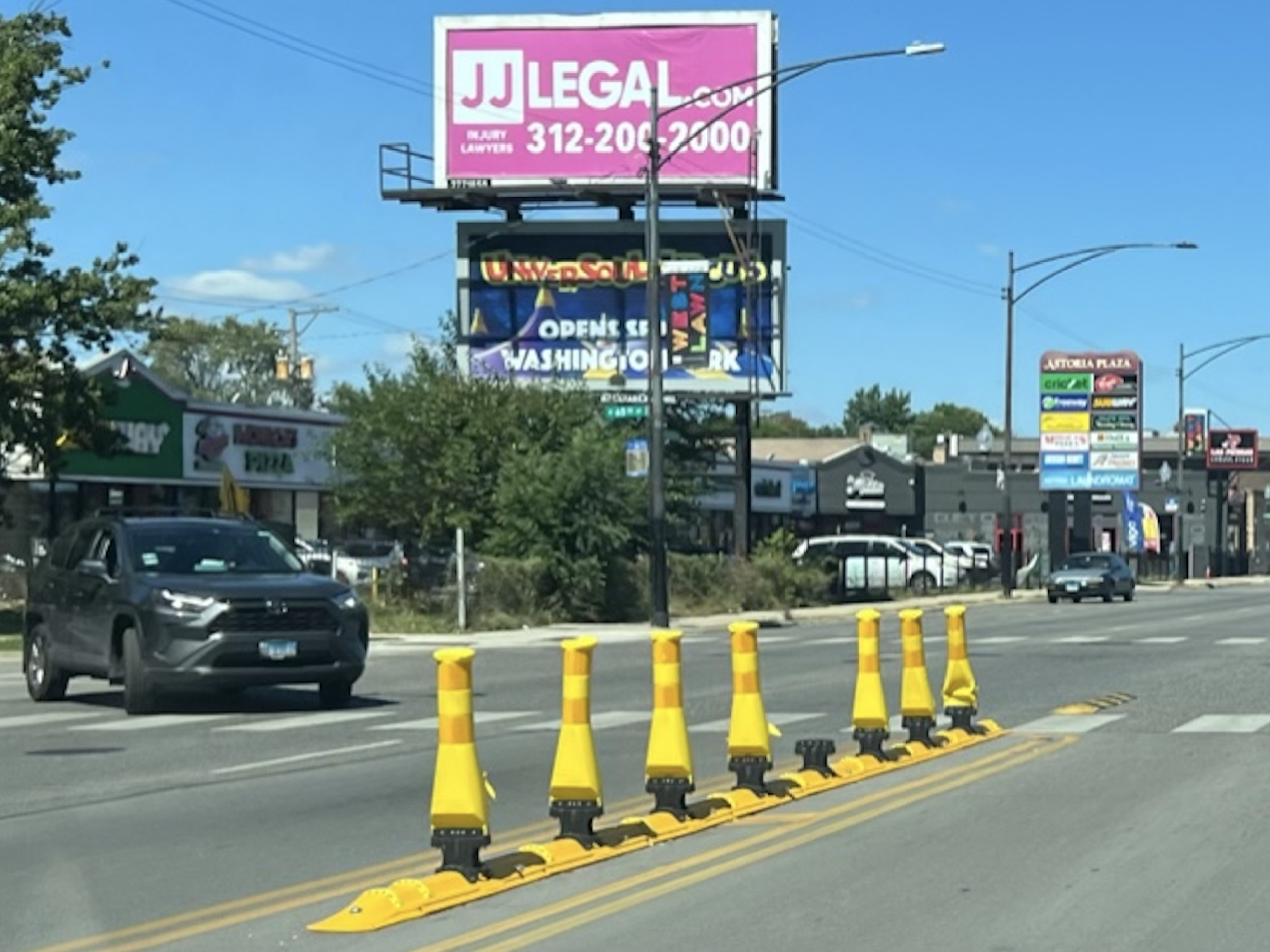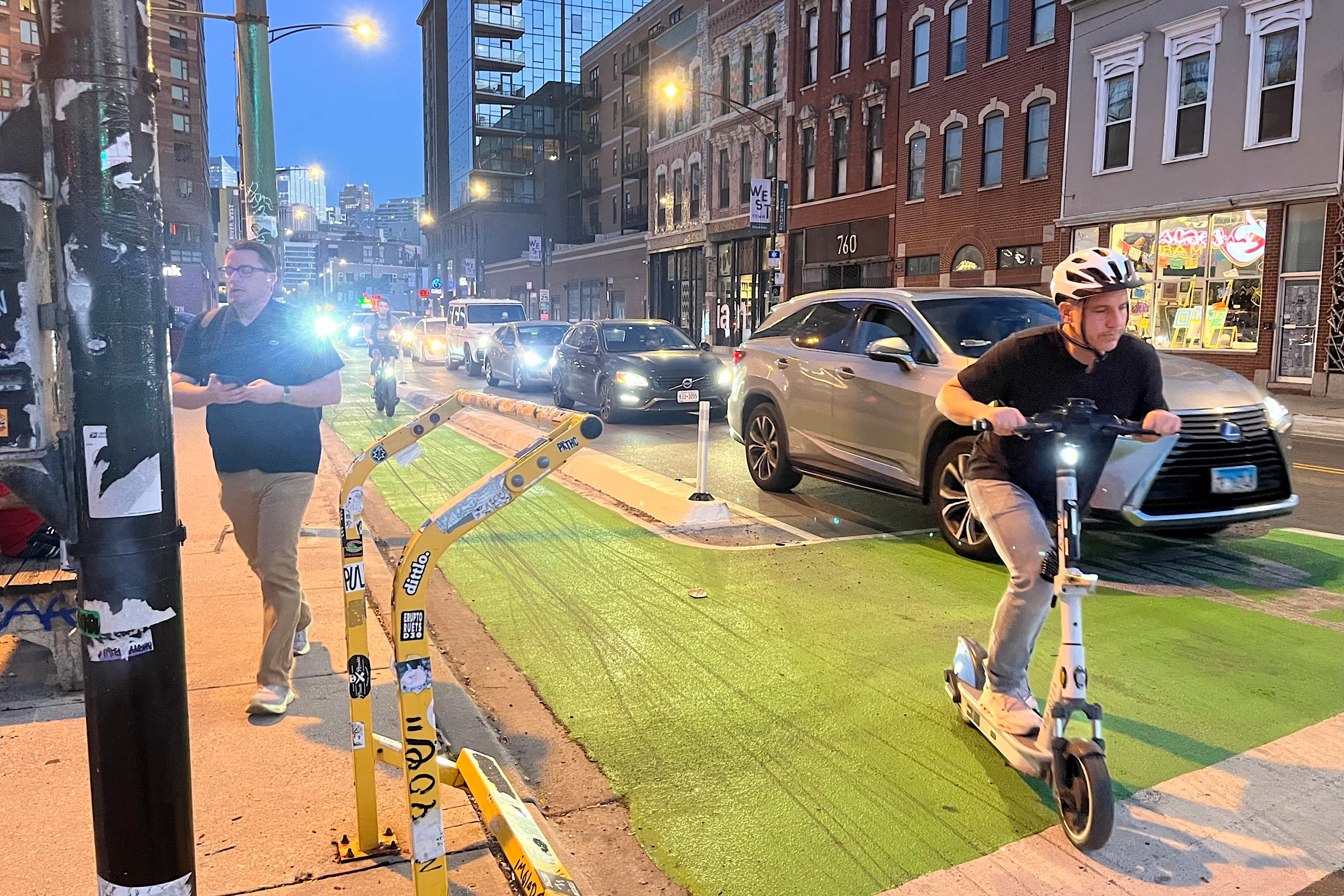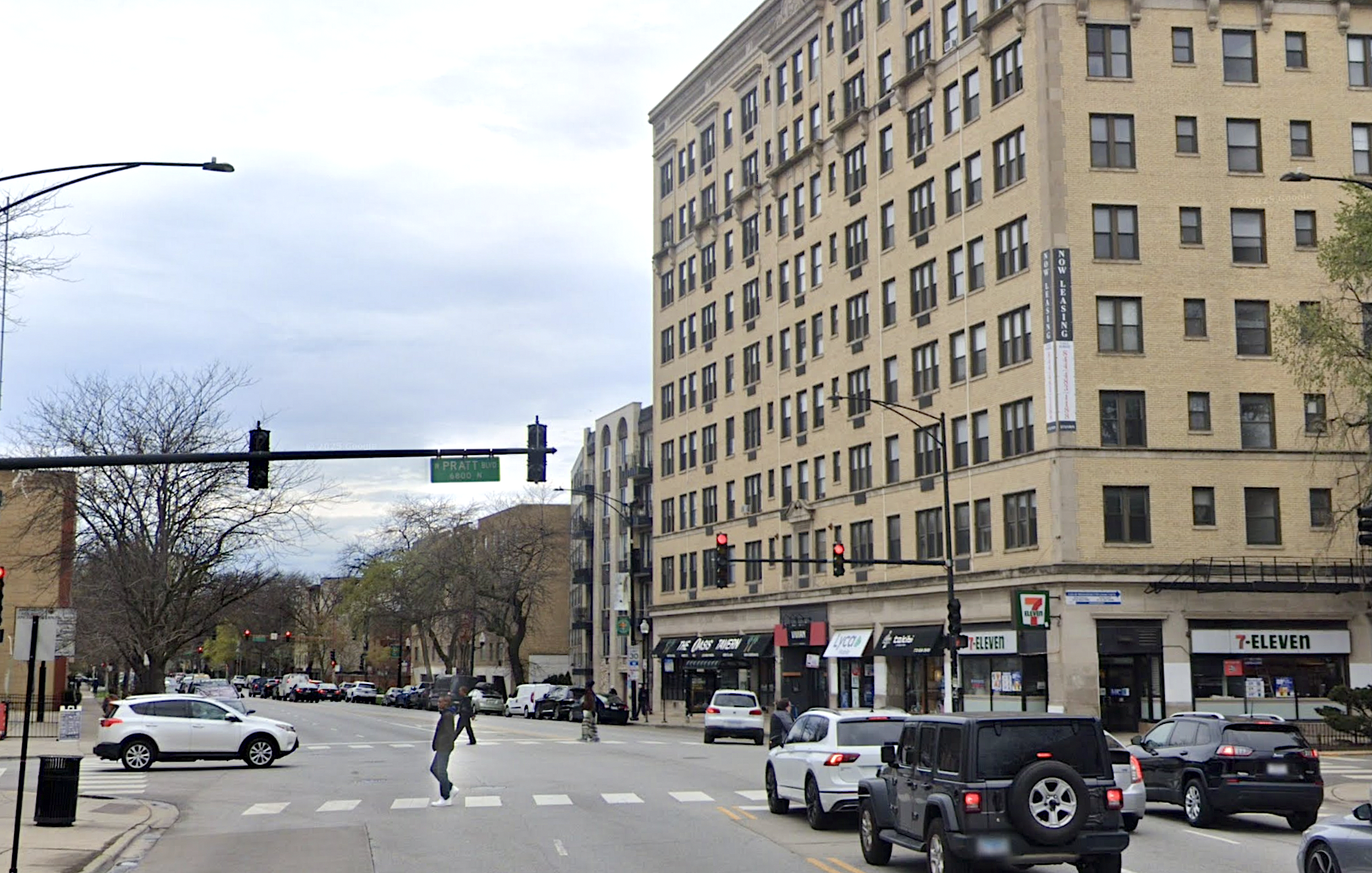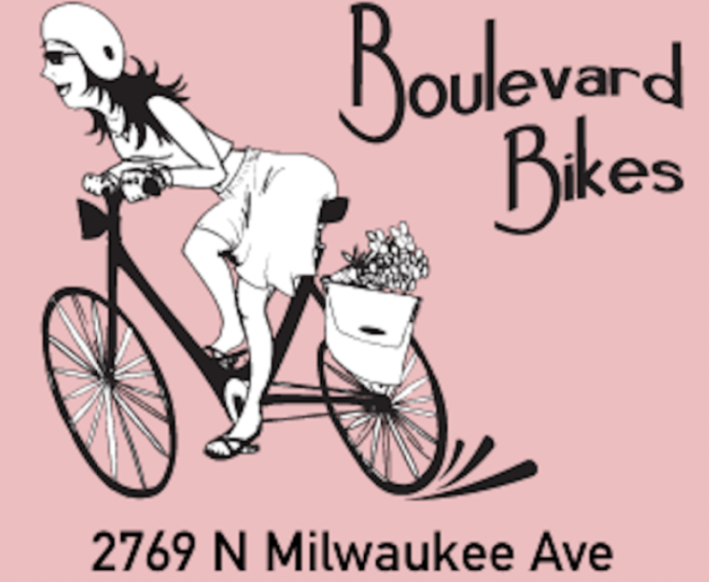
Thanks in part to the efforts of the Southwest Collective, progress is being made on making dangerous South Pulaski Road safer.
Last February, a hit-and-run driver fatally struck Jiekun Xu,68, in a crash near 43rd Street and Pulaski in Archer Heights. A few months later on Easter night, another hit-and-run motorist struck and killed Charlie Mills, 56, near 64th Street and Pulaski in West Lawn.
In the wake of these tragedies, the Southwest Collective has been working on strategies to prevent more serious injuries and deaths on Pulaski. "We decided that the of goal of making Pulaski safer was something that required input from neighbors," said SWC Transit Advocacy Steward Dixon Galvez-Searle. "And so we wanted to, as best we could, document what people were experiencing who lived near Pulaski. So, we did an online survey and collected responses that way. And we also did a series of in-person walks along Pulaski for the stretch from 40th Street at the I-55 bridge to 71st Street at the Belt Railway bridge to document all of that."
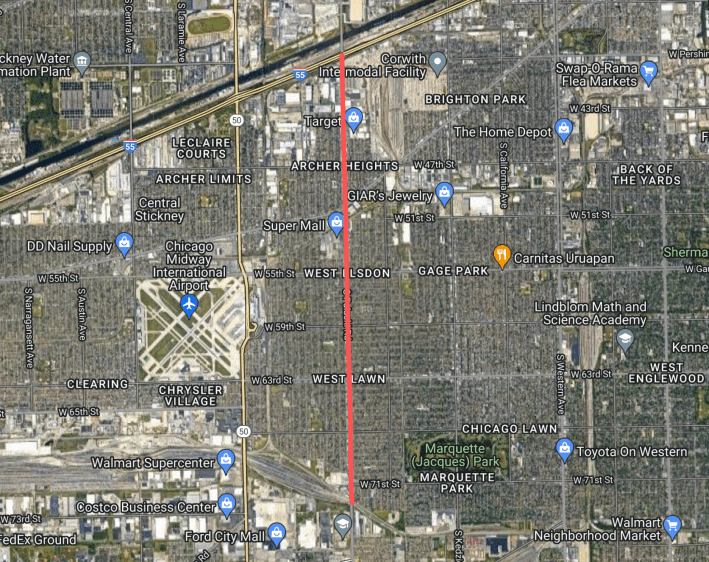
SWC teamed up with the Active Transportation Alliance on the survey to get feedback about how to improve Pulaski, with a letter directly addressed to the business owners in the area. ATA Advocacy Manager Alex Perez said drivers had struck many businesses along the Pulaski corridor, especially corner buildings, such as a local bank. The business submitted pictures of the damage motorists had done to their properties.
Many other residents filled out the survey. "We got about 500 responses from community members and residents," Perez said. "We are just kind of talking about the things I've mentioned. Some [of the crashes were caused by] people just getting impatient... A lot of people are sitting in traffic on Pulaski... they feel like they wait too long and would just want to cut a few seconds." The reckless driving that results can have heartbreaking consequences.
The survey results were presented last September at a town hall at at Curie Metro High School, 4959 S Archer Ave. Galvez-Searle and Perez were panelists, as were local representative Ald. Jeylú Gutiérrez (14th) and Chicago Department of Transportation Traffic Engineer Jakob Boxberger.
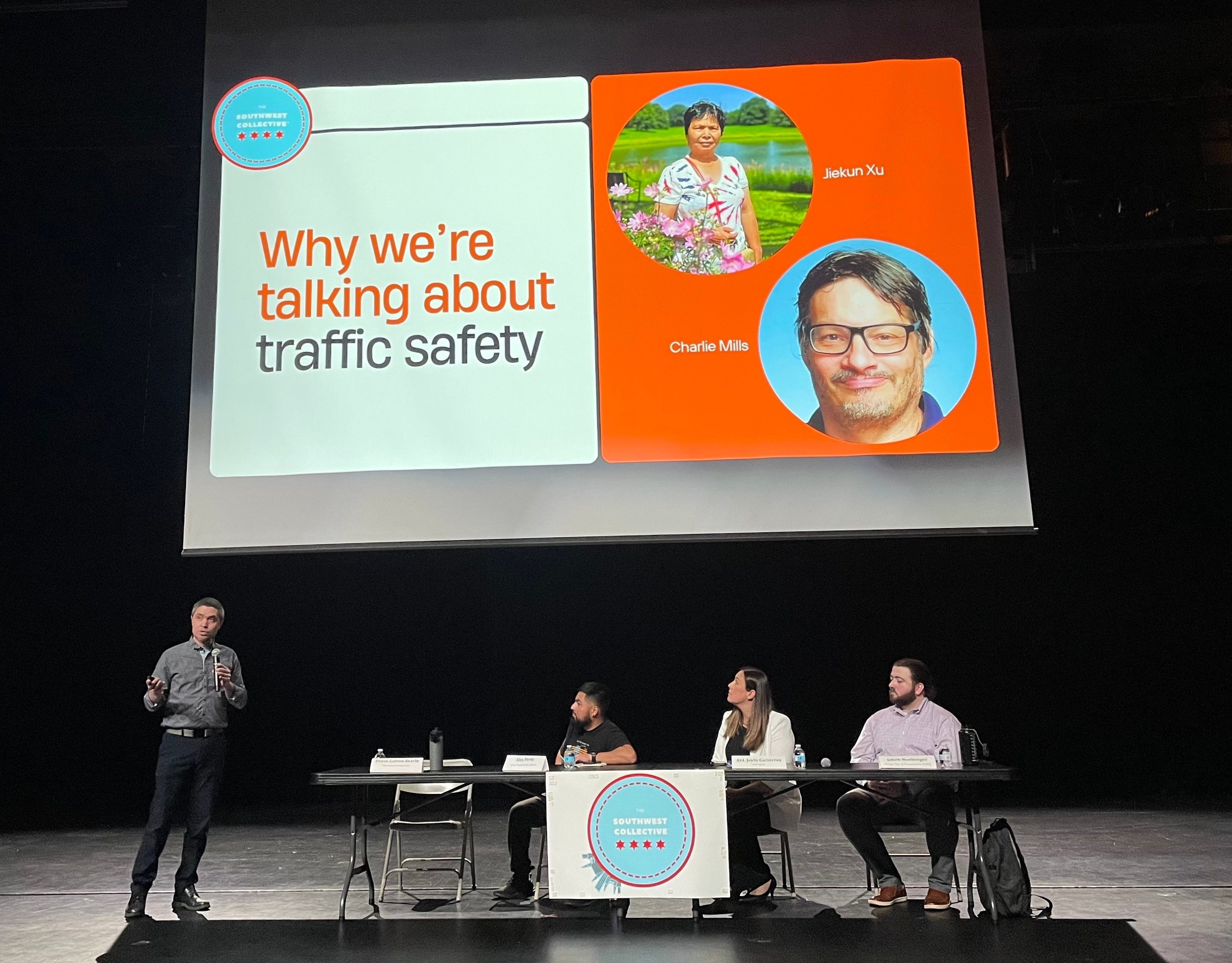
At the town hall, the City officials discussed coming safety improvement. "We started with striping out parking lane lines, improving crosswalk visibility, refreshing all that's right around the corridor," Boxberger said. "I know that may not seem like a huge improvement, but it visually narrows the road and makes drivers more aware of where there are crossings, where they should be driving, and where they should not be driving, which includes a [painted] median. Refreshing medians is critical."
Over the past month, quite a bit of construction has been happening on Pulaski. Galvez-Searle said the road is scheduled to be repaved in the near future, possibly next month, and the temporary infrastructure and plastic bollards will be replaced with concrete infrastructure. CDOT is piloting the installation of a ring of plastic bollards in the medians of some intersections. This strategy is intended to stop illegal street racers from doing donuts and drifting overnight.
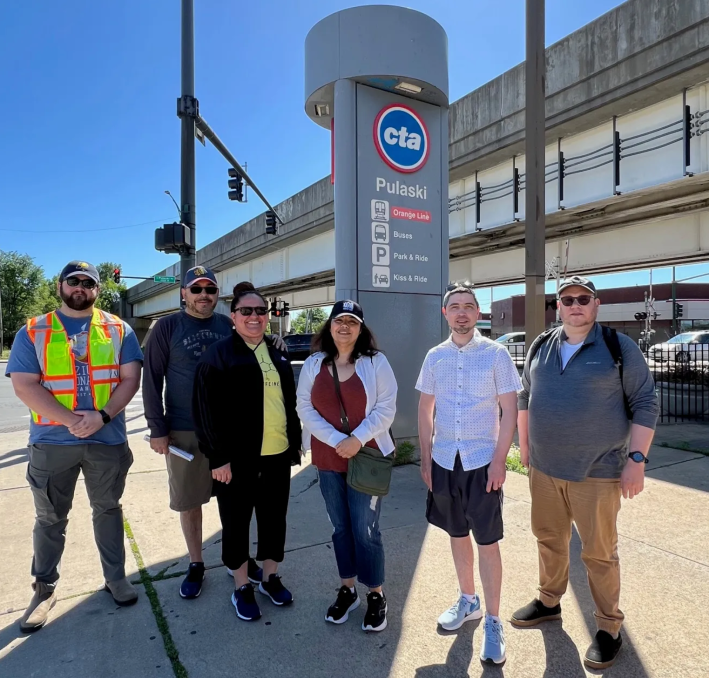
"And then, I think the next step is again, when Pulaski is repaved, to do permanent versions of that," Galvez-Searle said. "And so the thing we really have our eye on is to make sure that that happens. [My understanding is] that CDOT can put in these types of plastic or what they would deem temporary infrastructure in place on their own, but that [the Illinois Department of Transportation] would need to sign off on concrete changes to the road. We're hopeful that CDOT determines that this new infrastructure is having the desired effect, and is reducing crashes, and that IDOT won't stand in the way of making it permanent."
The Southwest Collective has worked with students at Curie High on a letter-writing campaign for traffic safety. The school is at the corner of Archer Avenue and Pulaski, two very busy streets, so that's an issue that affects them directly. The students wrote letters, and the Southwest Collective will deliver them to elected officials.
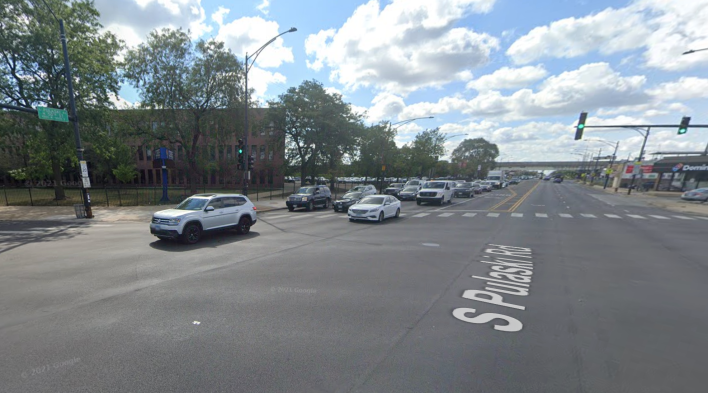
Galvez-Searle also discussed other possible strategies to improve Pulaski in addition to traffic calming . "There's a lot of space on Pulaski for one thing, especially when you get south of the I-55 bridge," said Galvez-Searle. "There's no harm in dreaming big, right? What does Pulaski look like with robust tree planters in the median for the entire stretch? How would that improve traffic, safety, quality of life, and air quality in the neighborhood? And what would bus rapid transit look like on this stretch of Pulaski? How could it potentially connect to the bus rapid transit line on Western Avenue, which I know is in the early phases of being discussed?"
"So stuff like that, I think, is what we should be thinking about in the longer term," Galvez-Searle said. "But the first step is obviously to make sure that the community has spoken up pretty clearly. That safety is a concern along Pulaski. That we want way fewer crashes, and that we're not going to tolerate any more serious injuries or fatalities. And so we want to make sure... that the people who can put that into place are responsive. And so far, so good. But we have to keep on it."

Did you appreciate this post? Streetsblog Chicago is currently fundraising to help cover our 2025-26 budget. If you appreciate our reporting and advocacy on local sustainable transportation issues, please consider making a tax-deductible donation here. Thank you!
